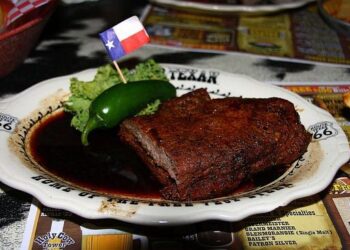On day 485 of Russia’s full-scale invasion of Ukraine, the leader of the Wagner mercenary group made his move.
used social media to
before embarking on a “march of justice” towards Moscow after seizing military sites in the southern city of Rostov-on-Don.
The coup was
. Within 24 hours, Prigozhin had negotiated a deal to stand down, ending the coup 200km south of Moscow.
Belarusian President Aleksandr Lukashenko
, offering refuge to Prigozhin and Wagner mercenaries in Belarus.
“There is a fence, everything is available, erect your tents,” he said, adding that an abandoned military base had been set aside for their use.
‘Grinding counteroffensive’: How much territory has been lost or gained?
Associate Professor Matthew Sussex from the Australian National University specialises in strategic studies, including Russian foreign and security policy.
He said after 16 months of fighting, Russia and its proxies have extended control to about 15 per cent of Ukrainian territory – an increase of 5 per cent to their land seizures in eastern Ukraine in 2014.
“The Ukrainians have managed to liberate about 200 square kilometres from where they were when the counteroffensive began [about four weeks ago],” he said.

The battle for territory is playing out in eastern Ukraine. The UK Ministry of Defence says fighting has also centred around the Dnipro River near the ruined Antonovsky Bridge. Credit: UK Ministry of Defence
“This isn’t an enormous amount because that’s spread over a very long frontline extending about 1,000 kilometres.
“Also, the vast majority of the territory where the Ukrainians are counterattacking is just flat farmland very much out in the open and a few wooded areas – so that takes time. And this is why it is a sort of grinding counteroffensive rather than something that can proceed quickly.
“Especially when the Russians continue to have air superiority if not air dominance. It’s something that will cost a lot more Ukrainian casualties and slow them down considerably.”
Despite the power struggle and failed coup in Russia, the battle waged by Russian troops continued on the ground.
Alexey Muraviev, associate professor of national and security studies at Curtin University, said to date Ukraine has not achieved a breakthrough by breaching Russia’s defences, including the so-called Surovikin line.
“The attempted coup in Moscow did not give Ukrainians any advantages because while Putin was trying to negotiate the political solution with Prigozhin and his men, the Russians continue to pound Ukraine with missile strikes, aerial strikes and drone strikes – and continue to fight along the frontline,” he said.
Mr Muraviev said factors stopping a Ukrainian breakthrough include Russia’s dominance of the skies with its attacks and what he called a failure by Ukrainian and Western intelligence to correctly identify Russia’s defensive layout.
In the last eight months, the territorial lines have remained relatively unchanged. Neither Ukraine nor Russia has managed to gain 260 square kilometres in a week, despite heavy casualty losses on both sides.
That rate compares to the initial gains made by Russia at the outset of the invasion, capturing more than 2,600 square kilometres a week.
In a major triumph for Ukraine, it
, forcing Russia into retreat on 25 March 2022 and thwarting its plan to take the capital city in a matter of days. By November 2022, Ukrainian forces had recovered territory in successful counteroffensives in
and
.
Can Ukrainians capitalise on post-coup fallout in Russia?
After nearly four weeks of Ukraine’s counteroffensive, it’s hard to know if a breakthrough on the battlefield is forthcoming.
Dr Jessica Genauer, a senior lecturer in International Relations at Flinders University who has been analysing the conflict in Ukraine in the ‘War in Ukraine: Update from Kyiv’ podcast, said for tactical reasons, both sides are holding tight onto current and future strategic information.
“None of us really know at this stage. But personally, I do think that we will see some significant gains from Ukraine before November [when the season changes],” she said.
“I think that at the moment, Ukraine has not in any way committed the entirety of its forces – or its capabilities – to the relatively small incremental operations that have been taking place in the last few weeks.
“And I have no doubt that Ukraine is waiting for the most opportune moment and most opportune place to try to engage in more serious counteroffensive operations.”
Mark Edele, professor of Soviet history at the University of Melbourne, said the full impacts of Prigozhin’s challenge have yet to fully play out.
“Russia has lost one of their probably most effective military units as a result of all of this, so that’s one fallout,” he said.

Yevgeny Prigozhin arrived in Belarus after leading a short-lived coup challenging the Russian military leadership. Credit: Prigozhin Press Service
“It might be that the command is a little bit more unified now because Prigozhin didn’t want to subordinate himself to the military command.
“It doesn’t look like there is a major impact on the political system so far. Some analysts thought that essentially we’re moving into some kind of civil war situation where the [Russian] state disintegrates. It doesn’t look like that to me at the moment.
“It is a moment of mutiny, but not really a major revolution at this stage. But it depends very much on what happens next and what Putin will do to recentre the state around himself.”
>>> Read full article>>>
Copyright for syndicated content belongs to the linked Source : SBS – https://www.sbs.com.au/news/article/what-happened-in-ukraine-during-the-mutiny-in-russia/89o9yanbr































